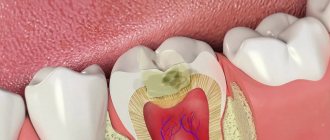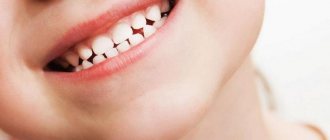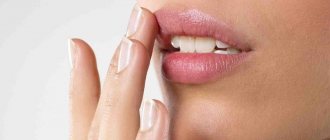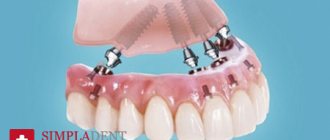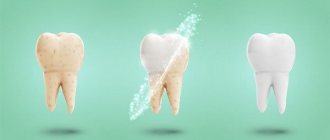Biorevitalization is a cosmetic procedure in which hyaluronic acid is injected under the skin using a syringe with a thin needle. The injection is performed in a papular manner, that is, with the formation of subcutaneous blisters. In the process of assimilation of the composition, they are absorbed without the need for any external influence.
Pain during contouring - myth or reality?
Thanks to unscrupulous players in the beauty market, potential clients have the impression that lip correction using fillers is a pleasant and painless procedure. But in reality this is absolutely not the case. Even the use of special anesthetic gels does not relieve pain. Subcutaneous manipulation with a needle is, to put it mildly, unpleasant, especially on such a sensitive area as the lips. Even those who have a fairly high pain threshold experience discomfort.
Manufacturers of lidocaine fillers claim that their solutions can reduce sensitivity by 35–40%. Cosmetologists also talk about positive experiences and slight swelling. But stories about serious complications that arise specifically from lidocaine-containing drugs are regularly covered in the media. Although we are mostly talking about overdoses or violations of sanitary standards.
An initial consultation with your doctor before the procedure is a wise thing to do. It is necessary to discuss with a specialist the selection of the drug, execution technique and contraindications. The doctor will take into account the individual characteristics of your body. This will help reduce the risk of side effects and eliminate allergic reactions.
Unpleasant complications after contouring - swelling and hematomas
From a medical point of view, slight swelling on the lips where the needle was pricked is quite natural. Microtrauma is caused to the vessels, hence the swelling. But it is still worth minimizing possible complications. Use the services of only professional cosmetologists, and follow all doctor’s recommendations. If a lip contouring session has already been performed and the result is not entirely successful, do not delay and immediately seek help from specialists. Attempts at self-medication will only worsen the situation.
Severe swelling is one of the side effects of filler, which is based on hyaluronic acid . Such preparations quite actively sublimate water. This situation is not considered a complication; the swelling subsides within 8–10 days. There are exceptions, but in cases of introducing a large volume of gel. Contrary to popular belief, it is not always possible to get rid of swelling with lymphatic drainage massage. We recommend reading how to remove lip filler without harm to your health.
Lip contouring: consequences in the form of inflammation
Inflammation cannot be called a direct side effect. Non-sulfated glycosaminoglycan (hyaluronic acid) is completely biologically compatible, but despite this, after its administration the body activates its standard protective reaction. As a rule, biological processes return to normal within a few days and inflammation goes away on its own. But in some cases, redness remains. There are two possible options:
- Along with the puncture, an infection entered the body . But this is not always the cosmetologist’s mistake. The viruses could have been developing for several days, and the injection triggered their launch.
- Autoimmune diseases reacted to the drug injected into the lip area, activating an inflammatory reaction and an increase in connective tissue.
In terms of neutralization, each of the points requires different therapy. In case of infection, you must make an appointment with a doctor to clarify the diagnosis and take pharmacological medications. If an autoimmune disease is to blame, then it is worth undergoing steroid therapy - it effectively reduces the immune response. But only a doctor prescribes the prescription and regimen for taking any medications. Self-medicating the consequences after contouring is extremely dangerous. Instead of reducing inflammation, you can, on the contrary, provoke suppuration and the formation of permanent scars.
Find out which method of correcting scars and stretch marks is optimal for you!
doctor Svetlana Viktorovna Ogorodnikova.
doctor
Fordyce granules
Fordyce granules: why they occur and how to get rid of them
For some this is an almost unnoticeable trifle, but for others it is a serious cosmetic defect. What are Fordyce granules and can they be treated? What do cosmetologists and dermatologists offer to patients who come to them with such a problem?
WHAT ARE FORDYCE GRANULES
Fordyce granules (or Fordyce disease) are light-colored pimples (sebaceous glands) that can form on the oral mucosa, cheeks, lips, female labia, surface of the male penis, breast nipples, groin area and other places on the body Currently, Fordyce granules are considered normal, but in some cases they can cause severe discomfort. Fordyce granules are also called seborrheic cysts.
According to medical statistics, Fordyce disease affects 35% of women and 60% of men. The granules do not lead to the development of complications, do not cause harm to health, and are not transmitted to a partner during sexual intercourse. Most often, patients with seborrheic cysts seek medical help because of a cosmetic defect, since these neoplasms do not cause any other complications.
FORDYCE GRANULES: REASONS
The reasons for the appearance of Fordyce granules are still unclear. Despite the name "seborrheic cysts", no connection with seborrhea has been found in Fordyce granules. Most often, these neoplasms occur during puberty, when hormonal changes in the body give rise to the appearance of sebaceous gland cysts.
The current prevailing view is that the main cause of Fordyce granules is that in some people the sebaceous glands are located too close to the upper layer of the dermis and epidermis. In some cases, they are located abnormally - on the border of the lips or on the mucous membrane of the mouth.
It is noteworthy that this arrangement of the sebaceous glands is congenital in nature, however, during puberty (13-16 years), under the influence of sex hormones (in particular, male sex hormones), the activity of the sebaceous glands increases. In adolescence, the level of sebum production increases, which leads to the noticeable appearance of sebaceous gland granules.
Doctors identify several factors that contribute to the appearance of granules, including:
- smoking;
- damage to the ducts of the sebaceous glands;
- neglect of hygiene rules;
- hormonal imbalances;
- narrowing of the excretory ducts of the sebaceous glands.
It is noteworthy that Fordyce granules can be present in a person for many years, but after 40 years, seborrheic cysts can disappear on their own.
Fordyce granules
FORDYCE GRANULES ON THE LIPS
Unlike Fordyce granules on other parts of the body, seborrheic cysts on the lips are smaller (diameter does not exceed 2 millimeters) and less convex. They are white or pale yellow in color. For some people, the granules cause itching, but you should not scratch them, as this can lead to infection. In this case, it would be best to consult a doctor so that a specialist can prescribe antipruritic medications.
In addition, do not try to squeeze out the nodules under any circumstances. Firstly, this will not get rid of the rash, but on the other hand, when you try to squeeze out the nodule, a hematoma will form due to minor bleeding. In this case, scars may remain, which in an aesthetic sense is much worse than Fordyce granules.
FORDYCE GRANULES: TYPES
There are two types of Fordyce granules:
- Fox-Fordyce disease
- Pearly penile papules
As for pearly penile papules, this is a variant of the norm . According to medical research, they occur in 30% of young men . They do not cause any harm to health, and are not sexually transmitted and do not cause any complications, so the man and his sexual partners have nothing to worry about.
In medicine, the problem of pearly papules has been poorly studied, and doctors do not have sufficient awareness of this phenomenon. There is no effective treatment for pearlescent papules yet, but it is not required.
The reason for the appearance of pearly papules on the penis is also still unclear. Some experts believe that the whole problem comes down to excessive proliferation of the epithelium of the excretory ducts of the glands of the penis. Other doctors are inclined to believe that the reason for the appearance of pearly papules is fibroplastic proliferation of areas of the epithelium of the glans penis.
As a rule, pearly penile papules appear during puberty, when the level of male sex hormones in the blood increases. It is noteworthy that among peoples who practice circumcision, the incidence of pearly papules is significantly lower than among others. It is believed that this is due to the fact that the increased amount of secretions and smegma with a circumcised penis is more easily released during hygiene measures.
As for Fox-Fordyce disease, it is an analogue of pearly papules, but only in women. The clinical manifestations of Fox-Fordyce disease are the same as those of pearly penile papules. This lesion is localized in the apocrine sweat glands and is to some extent associated with urinary function. It is possible that Fox-Fordyce disease is of endocrine origin.
Localization of granules in Fox-Fordyce disease is on the pubis, axillary fossae, perineum, labia majora, and around the nipples. As a rule, Fox-Fordyce disease is manifested by moderate skin itching, which intensifies during menstruation. Fox-Fordyce disease lasts for years and often goes away on its own after age 40.
DIAGNOSTICS OF FORDYCE GRANULES
When examining a patient, the picture of the rash is quite typical, and only on the basis of examination can the doctor make a diagnosis. However, if there are too many rashes, then there is a danger of confusing them with other diseases. In particular, when conducting diagnostics, it is important to differentiate Fordyce granules from eczema, lichen planus, neurodermatitis and molluscum contagiosum. In this regard, during the examination, the doctor may take a smear or prescribe a biopsy for microscopic examination of the sample taken.
FORDYCE GRANULES: TREATMENT
There are currently no effective treatments for Fordyce granules. It is impossible to completely get rid of such rashes. At the same time, doctors offer their patients some alternative techniques that can slightly improve the cosmetic effect. In particular, patients are offered jojoba oil, as well as laser nodule removal procedures. It is difficult to talk about the effectiveness of these procedures, since the effect is different for different patients (but not high).
It is noted that with regular use of the products it is possible to prevent the appearance of new Fordyce granules. Removing granules using laser, cosmetic surgery or cryotherapy may only be effective for a while, as the granules reappear after some time. Effective methods for the prevention of Fordyce granules have also not yet been developed.
Each organism has its own characteristics and even the most harmless intervention can manifest them. One of these manifestations is Fordyce granules, and patients often find out about them only after the procedure.
Fordyce granules
Anamnesis
The patient came in for lip augmentation. This was her second procedure. The previous one was carried out three months ago by another specialist and, according to the girl, did not lead to the expected result.
Lip augmentation was performed with hyaluronic acid and went without complications.
Complementary therapy
To reduce swelling and prevent the appearance of hematomas, a homeopathic medicine was prescribed, 5 granules 4 times a day, several days before and after the procedure.
Complaints
10 days after the modeling, the patient began to complain of “yellowish dots in the upper lip area.”
Since telephone consultation is not acceptable, the patient was asked to attend an appointment. The girl ignored the advice and decided to go straight to a dermatologist.
Consultation with a dermatologist. Diagnosis
The dermatologist diagnosed an “allergic reaction to the filler” and prescribed treatment in the form of surgical removal of the papules “one at a time.”
It is important to know that an allergic reaction to hyaluronic acid occurs on the first day after administration of the drug.
It appears:
- inflammation
- severe swelling
- redness
- increase in temperature in the injection area and/or the whole body
Diagnosis by an esthetician
In fact, the patient’s complaint is related to the physiological state of her lips. The girl has a skin defect called Fordyce granules. After the filler was injected into the lips, features (granules) that were previously insignificant also increased.
Fordyce granules are painless skin formations, seborrheic cysts, which are small papules with white-yellow contents of a dense consistency.
This skin feature does not cause any harm to health and is only a cosmetic defect.
There is no specific treatment. Therapeutic treatment does not bring the expected result. They offer cryotherapy, electrocoagulation and laser therapy.
There is no prevention, since seborrheic cysts are not considered a disease, but are a variant of the norm.
Source: likar.info, estet-portal.com
Medical scientific and practical journal “Science & Medicine”
Fibrosis and compaction - complications after lip contouring
In the first days after the injection of fillers, lumps may appear at the injection site, this is due to the fact that the substance has not yet had time to distribute evenly. Sometimes it happens that a hematoma (bruise) appears due to damage to a vessel. Within a week, it usually resolves, but if the cause of the lump is fibrosis, then the situation is much more complicated and requires your close attention.
Why does fibrosis occur?
The distribution of fillers in the lip occurs gradually, and the effect can last up to 12 months. Immediately after administration of the drug and during the first week, balls are felt under the skin, which dissolve on their own. Clots are nothing more than drops of filler, which is quite natural. Fibrosis is an unpleasant complication when connective tissue grows with the appearance of scar changes.
One of the obvious reasons for the formation of fibrosis is the rejection of a foreign substance by the body . In this case, a well-chosen injection solution can solve this issue. But only a professional cosmetologist can determine the dosage and prescribe the necessary drug that will not aggravate the situation. The doctor will also tell you what care is suitable after lip contouring in your case.
Unobvious reasons for the formation of fibrosis include:
- inexperience of the cosmetologist;
- violation of sanitary norms and rules;
- mechanical damage to the walls of blood vessels;
- counterfeit or low-quality filler;
- violation of the technology and technique of drug administration;
- incorrectly selected dose of the administered substance.
Rehabilitation after lip contouring
Fibrous changes after filler injection can occur anywhere on the face, but a particularly favorite area for localization of compactions is the upper lip. This is due to the fact that the skin here is extremely sensitive, delicate and thin. Swelling may not even arise from the filler, but simply from trauma to the skin with a needle.
Seals on the lips cannot be corrected with makeup. Fibrosis is noticeable to the naked eye, and you won’t be able to hide lumps with lipstick and gloss; rather, on the contrary, you only focus attention on this area. It is possible to get rid of fibrosis in one of two ways: surgical or conservative. In the first case, surgical intervention will be required, and in the second, an external agent with collagenase enzymes. The operation is an extreme measure, which is usually used to extract biogel; most often, gentle methods can be used.
Reasons for the appearance of seals after lip augmentation
There are several reasons for such problems:
- incorrect filler injection technique due to the low level of qualifications of the specialist who performs contouring . Most often, hyaluronic acid is not injected deeply enough or in large volumes. Such seals are especially noticeable in women with thin skin. They look like bluish or grayish formations. You can wait - the filler dissolves on its own within 1-2 months - or remove the excess with the help of special preparations;
- migration of hyaluronic acid : displacement of the gel during the first time after administration in tissues due to mechanical action or other reasons. This occurs when the bag holding the substance has not yet formed;
- inflammatory process in the area of filler injection : redness of the skin and swelling, local increase in temperature, severe pain. Occurs due to the penetration of pathogens into the deep layers of the skin through punctures or due to the presence of autoimmune diseases;
- connective tissue growth : hyaluronic acid stimulates the activity of fibroblasts that produce collagen and elastin. Seals can appear after a long time, and getting rid of them is quite difficult;
- formation of a hematoma due to severe damage to blood vessels : most often, hematomas are formed on the lips due to the large number of vessels located in them. As a rule, they resolve on their own;
- growth of cysts : formations in soft tissues filled with fluid. In the case of contouring, they may occur in response to the introduction of a gel;
- the use of low-quality fillers : the easiest way to avoid such a complication is that contour plastic surgery should be performed only in specialized clinics by professionals.
A cosmetologist should warn about the possible appearance of dense formations and explain in which case you should worry, and in which case you just need to wait.
